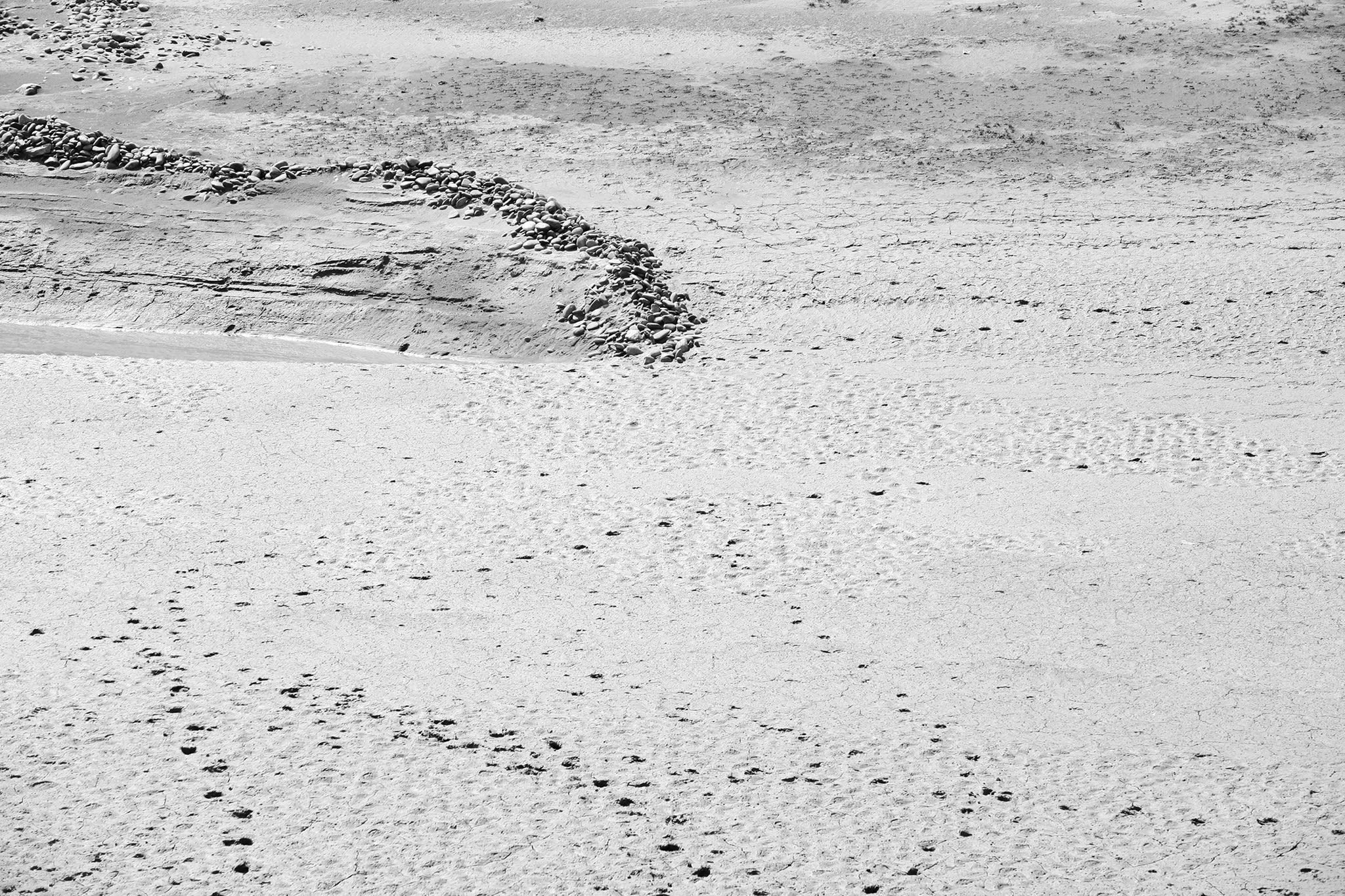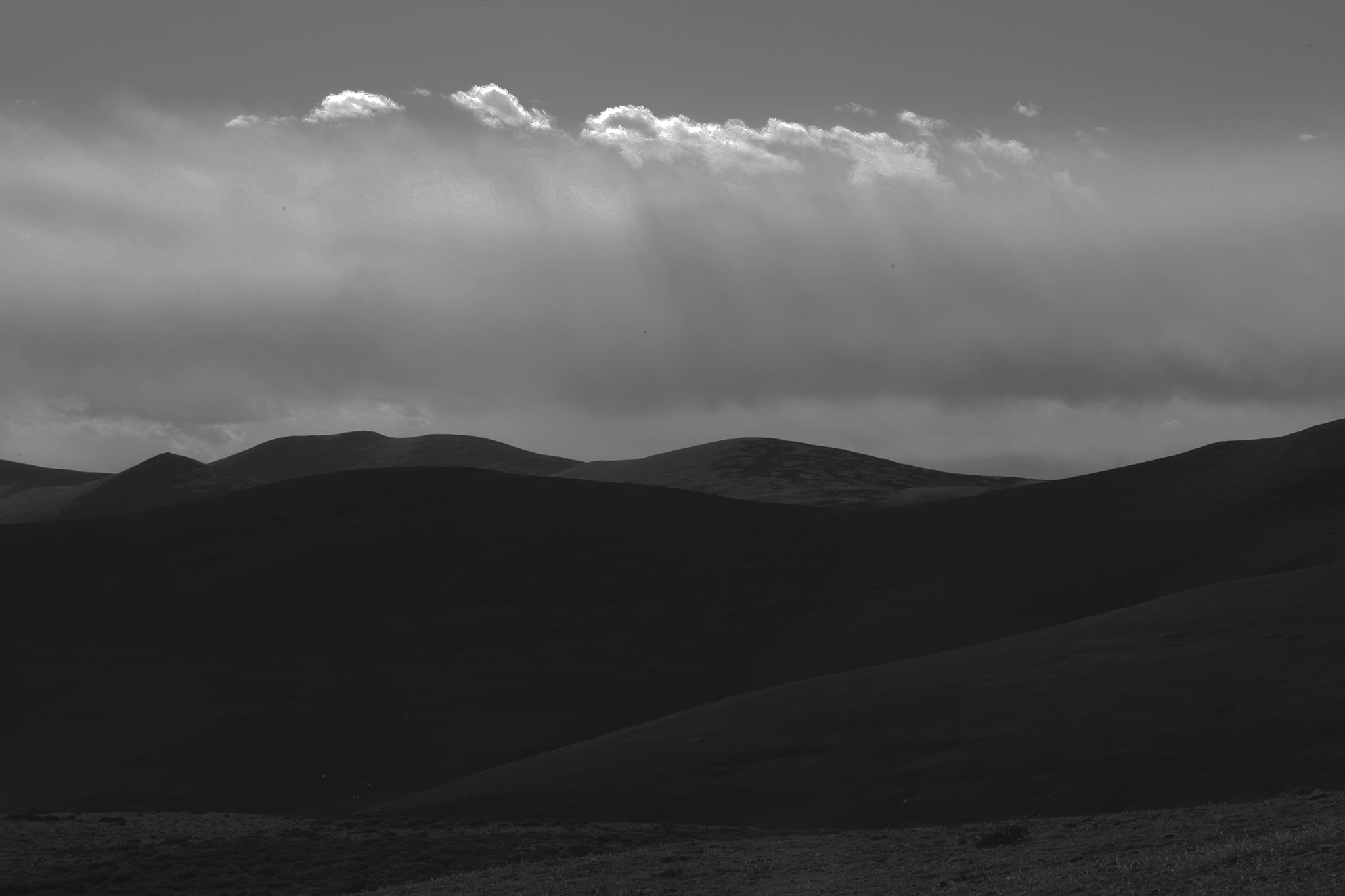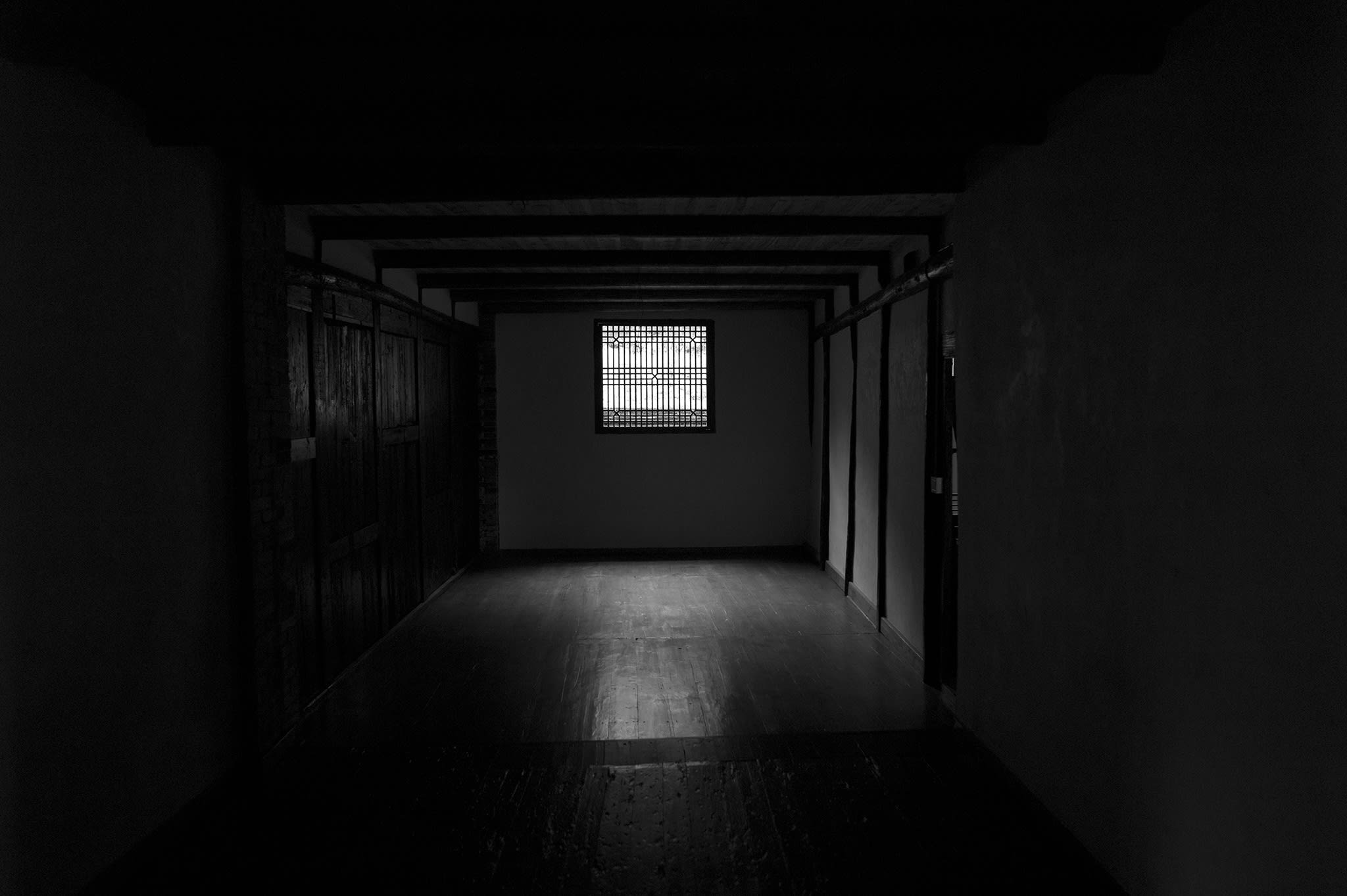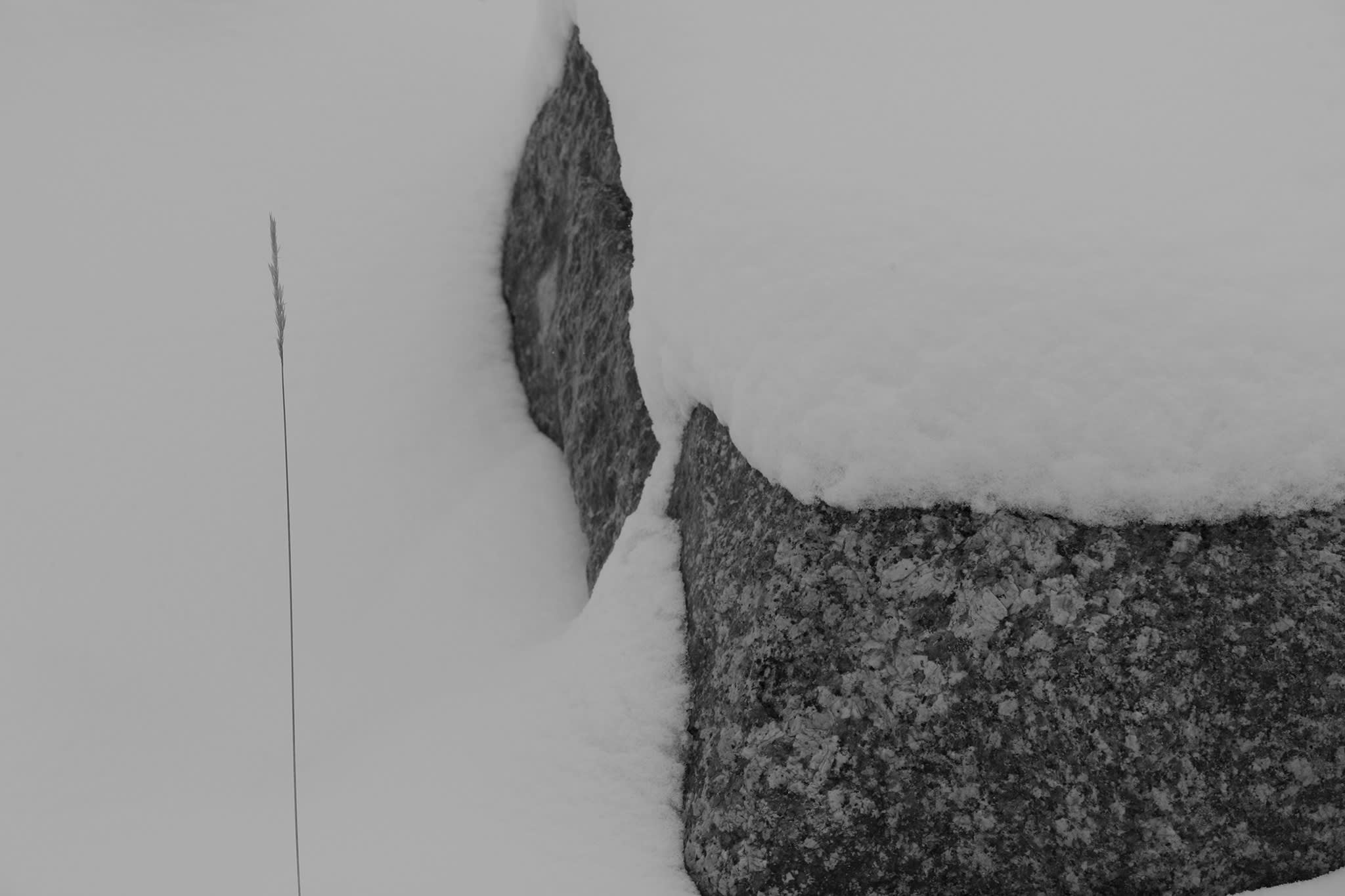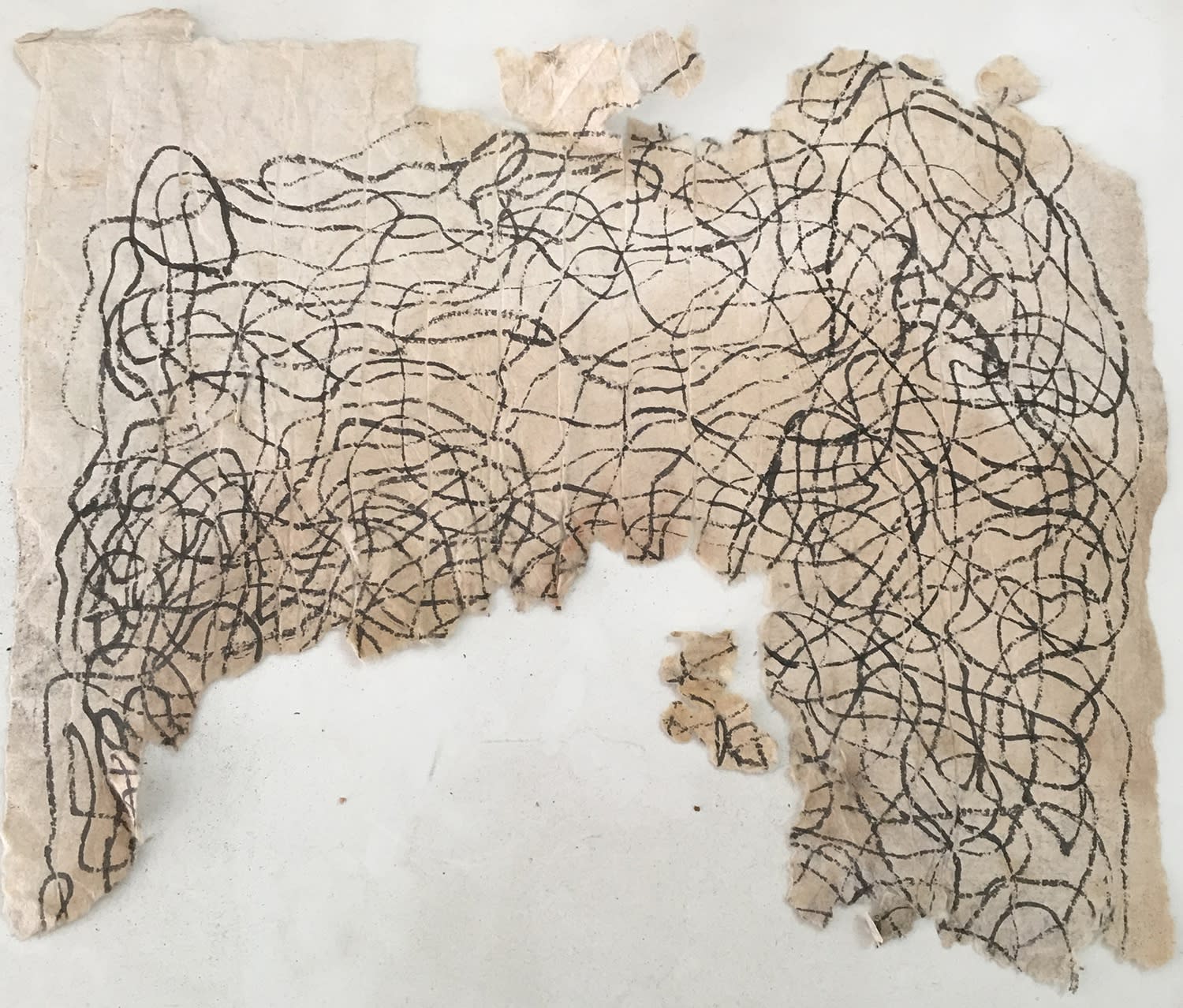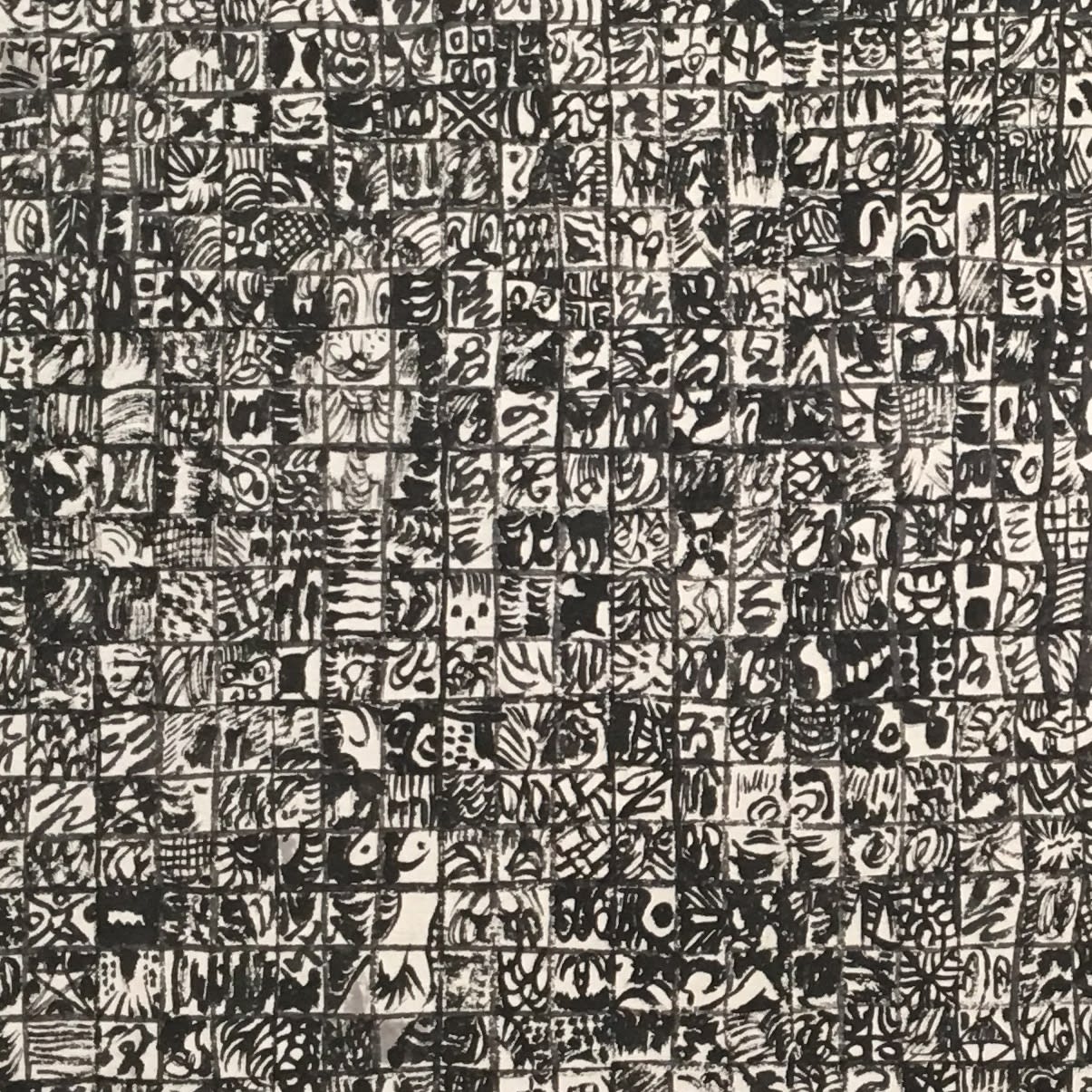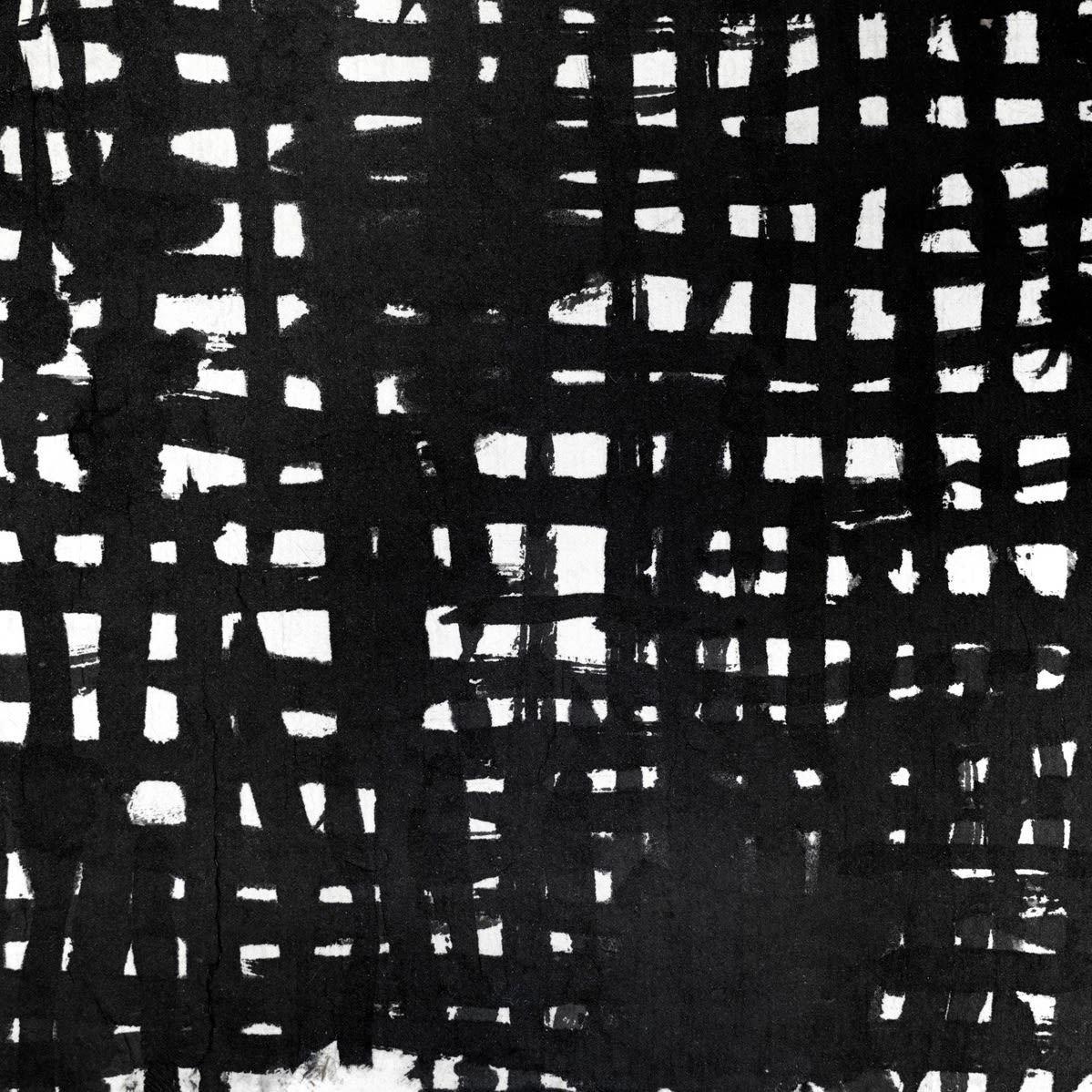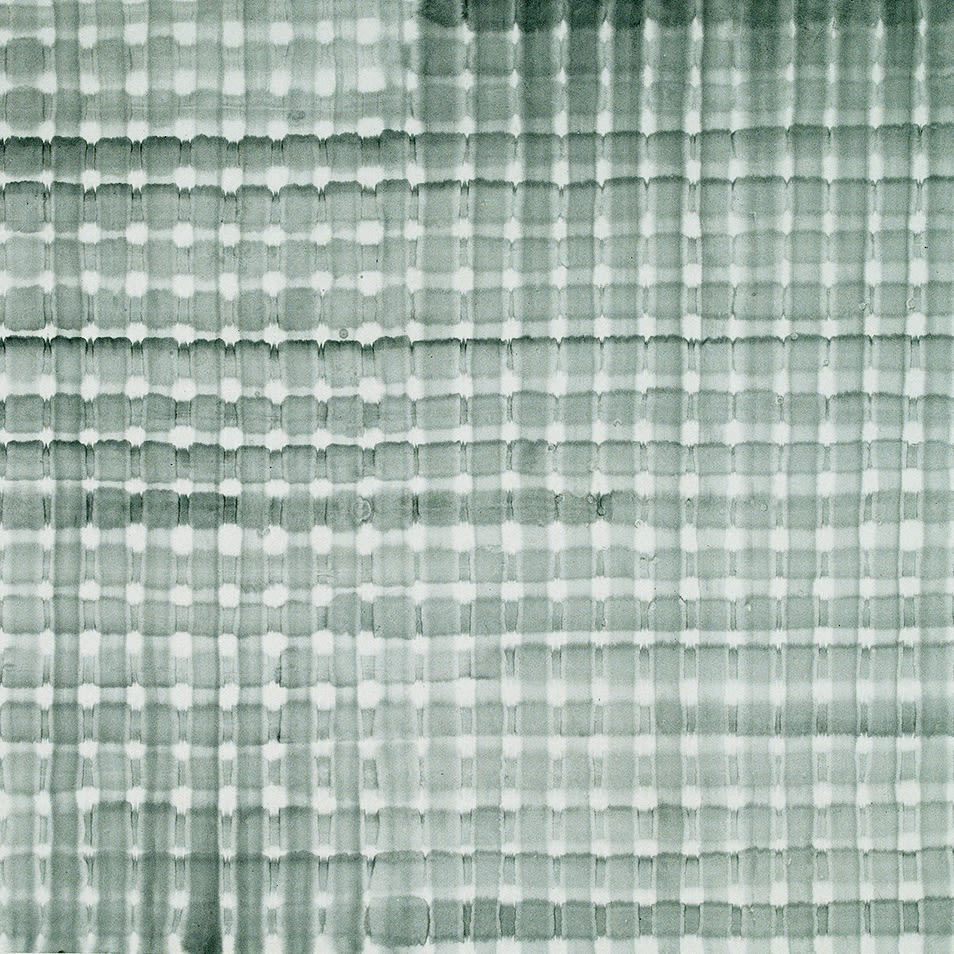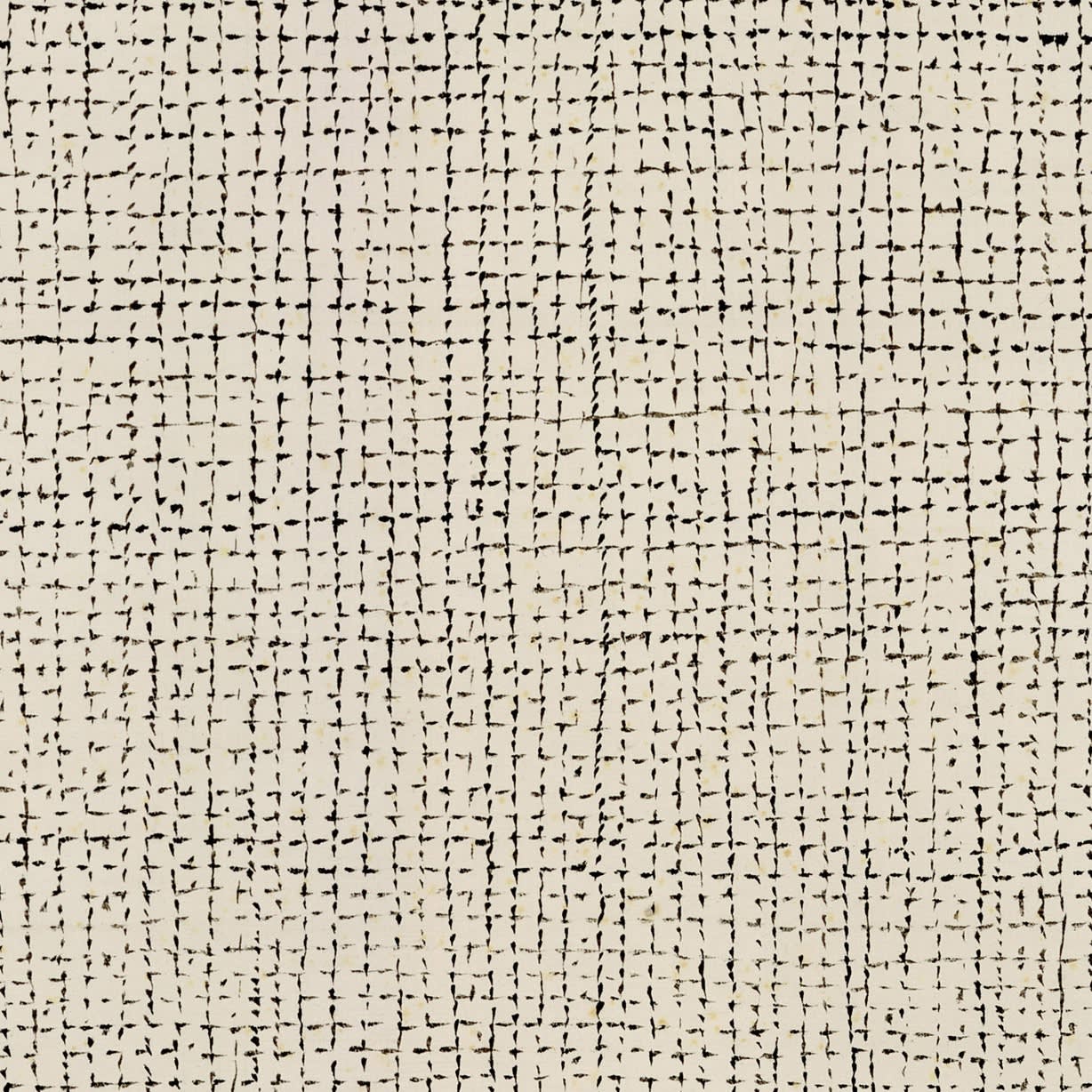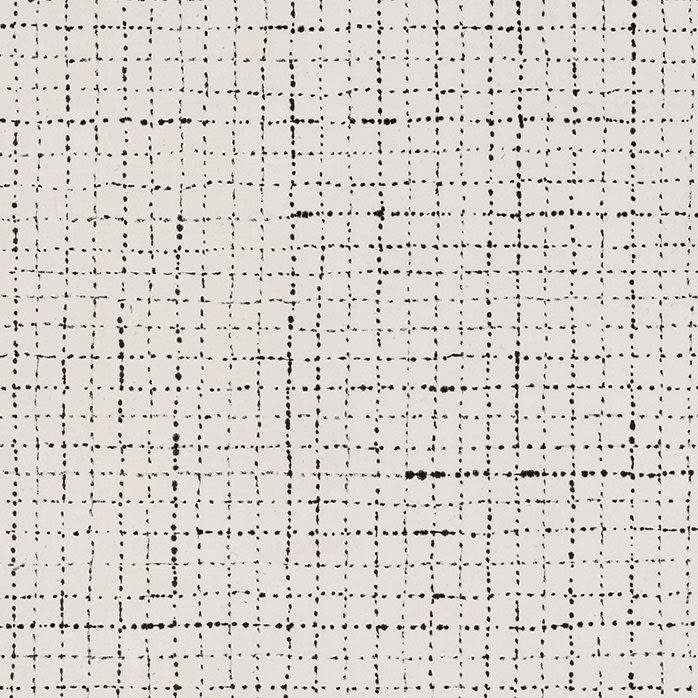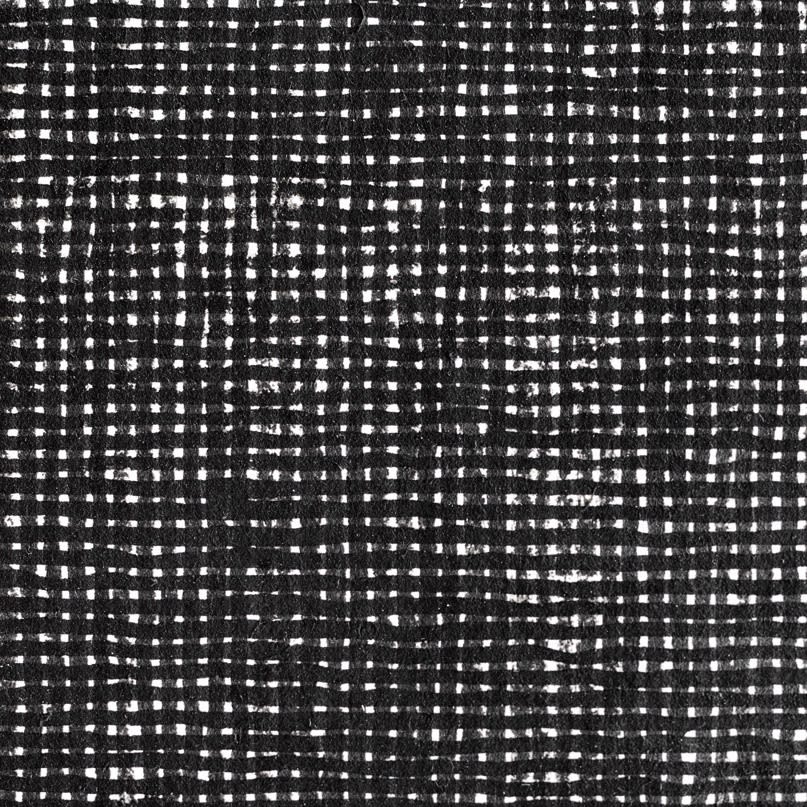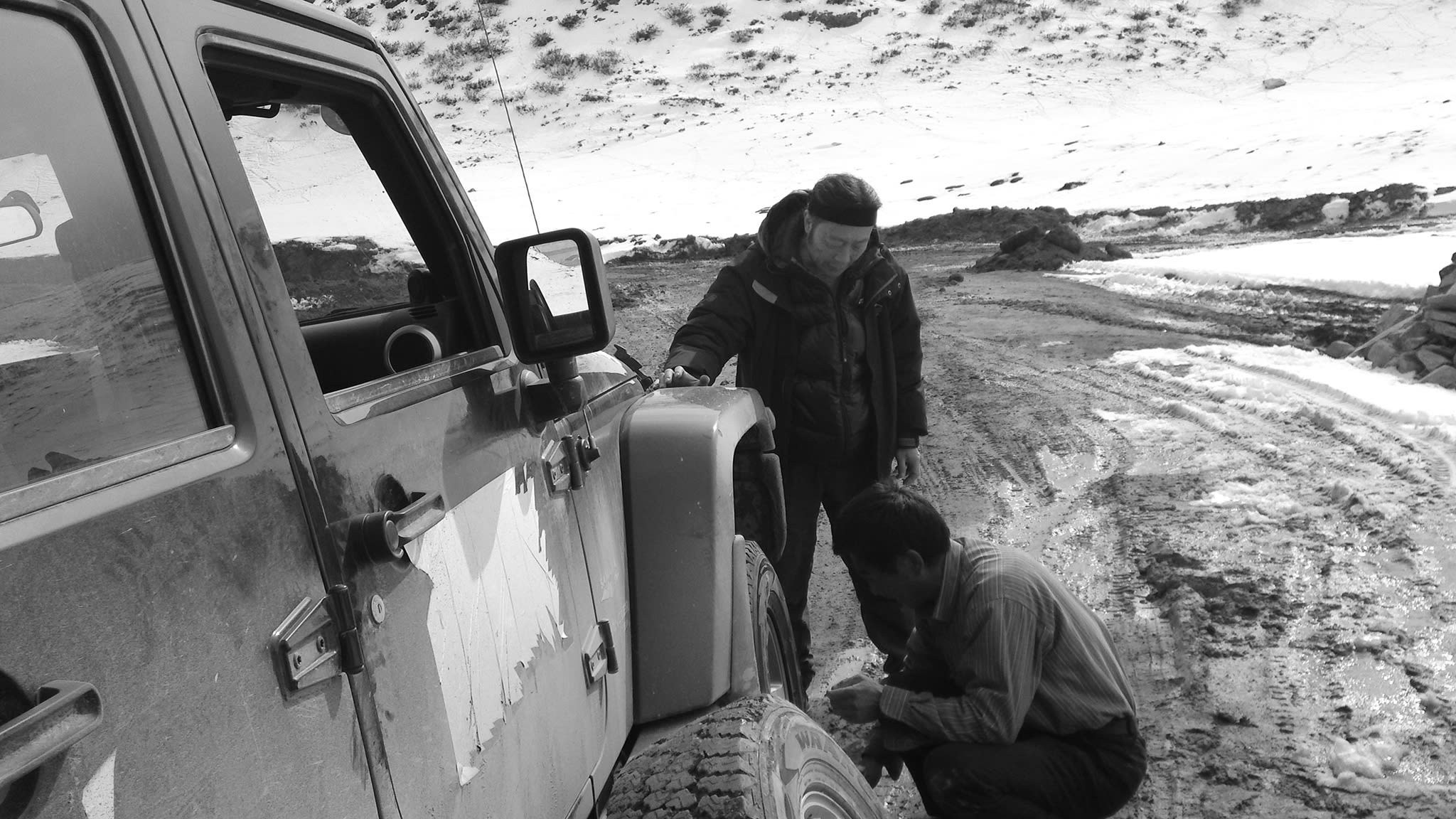
After returning to China from the United States in 1987, Li Huasheng began to question his past life and artistic practice. He was anxious to do something nobody else had done before, but was unsure of his direction. The fame and fortune he had earned did not lessen his angst. Resigning from the Sichuan Painting Academy and retreating from local art circles, he began to live as a recluse and travel alone to Tibet.
In the late 1980’s, there were far fewer tourists and pilgrims in Tibet. At the crack on dawn one day, Li Huasheng woke to the sound of deep and long chanting. Quietly entering Qoikang Monastery, he was awed by the scene unfolding in front of his eyes: a long line of lamas, all in red robes and with palms together, walking at a slow and even pace into the main hall for their daily lesson. From afar they appeared as a quivering red line dividing heaven and earth.
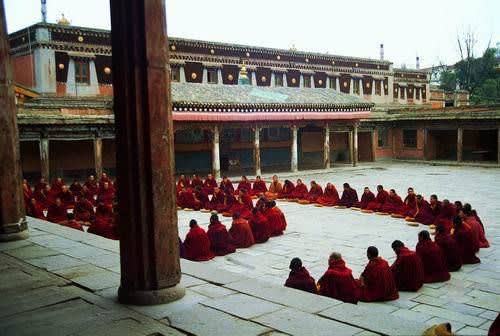
At the time, many Chinese artists painted Tibetan subjects like native Tibetan dress and accessories and yellow walls of rammed earth. Li Huasheng’s impression of Tibet, however, was crystallized in the experience of that morning: the ceaseless chanting of om mani padme hum, om mani padme hum visualized in the unbroken red line. He developed a vague sense that sheer repetition could be immensely moving.
As he later recalled, “It was solitude that released me from pain. Because of solitude I chose to go into the mountains,” by which he meant going to Tibet. Upon his return, Li Huasheng began to find a way to express the power of repetition. Traditional ink painting was no longer useful for his purposes.
Inspired by the formation of monks, Li Huasheng traced a long line on a piece of paper until it became a tangle. This first unbroken line would lead to experiments in drawing large-scale grids and filling the intervening spaces with images from his mind. The process was akin to keeping a visual diary. Finding the images too realistic, he then made another grid and filled it with seals, but he had yet to become the artist we now know.
|
The first unbroken line (damaged)
|
|
|
9702 (detail): a grid filled with images |
9901 (detail): a grid filled with seals |
Then one day, Li Huasheng suddenly realized the dense grids were beautiful on their own. Without figurative content, they were more metaphysical and closer to the inarticulate passions and desires in his mind. With this inspiration, a new creative path opened before him, although committing it to a sustainable practice would still take time. Could these grids truly become works of art?
Although Li Huasheng was not entirely certain himself, he felt instinctively that the repetitiveness and abstractness of the grids corresponded most closely to his new life and state of mind. He is not a Buddhist, but when he draws line after line with his thin brush on a vast piece of paper, his mind is stilled, his self disappears, as does the world. This is not unlike how the chanting of a sutra surrounds the mind and vacates it of all thought.
In the following decades, Li Huasheng painted many kinds of lines—thick and thin lines, varying, restraint lines, lines consisting of dots, sharply incised lines, lines with two layers. As he developed his practice, he continued his visits to Tibetan areas whenever he had the time and energy.
|
9201 (detail): thick ink lines
|
9902 (detail): energetic and wet lines |
|
9401 (detail): widening and thinning lines
|
9407 (detail): lines with ink wash effects |
|
9877 (detail): lines resembling incision
|
0342 (detail): dotted lines |
|
0669 (detail): thick, emotionally restraint lines |
1371 (detail): rhythmically spaced lines
|
|
1381 (detail): “misted ink” over fine lines |
|
One day in Tibet, he had a terrible toothache, and he removed a loose tooth by hand and buried it in the snow as a memorial to the mountains. Another time, he suffered altitude sickness and had to borrow a respirator from the local army unit. In his most dangerous episode in Tibet, after driving alone in the dark and sleeping in the car, he woke up to find his car perched on the edge of a cliff, causing much alarm among the locals. Despite these experiences, Li Huasheng still visits Tibet regularly. In recent years he has become obsessed with photography and taken many photographs of the region. In these black and white images, we catch a glimpse of an abstract artist’s view of the world.
Li Huasheng's photographs of Tibet


